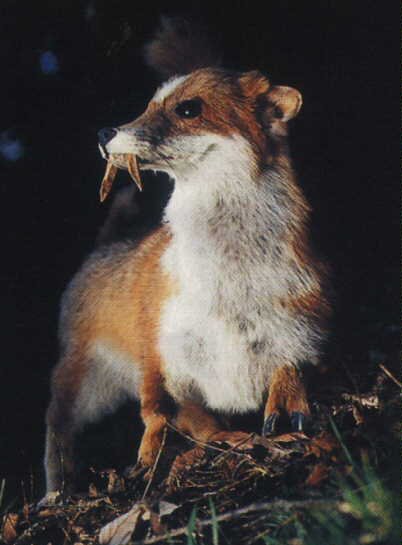14 June 2009

Several people have inquired about how I came to name the Daku, "Daku". Here is a bit of info on the origin of the word.
Nietzsche said, "I have a pain and call it dog.", meaning the first step in controlling something is to name it.
The story in a nutshell. I was plagued with a psychosomatic stomach ache for years. At one point, while feeling like I was being eaten alive, I decided to take Nietzsche's advice and name it. It is a merging of three words from three different languages,
1- Paku (Japanese), to eat in big bites. Like Pacman.
2- Pacu (Portuguese), Piranha fish.
3- Le Dahu (French), A mythical mountain creature that snatches children up and eats them if they don't come home before dark.
Below are some pics as well as the wikipedia description of Le Dahu:
In French lore, the dahu has the appearance of a deer or ibex, but with the principal characteristic that its legs on one side of its body are shorter than on the other side. This enables it to walk upright on the steep slopes of its mountain environment. It can only walk around the mountain in one direction. Legend attributes various differing descriptions to the animal, including the laevogyrous dahu (which has shorter legs on the left side, and thus goes around the mountain counter-clockwise) and the dextrogyre dahu (which has shorter legs on the right side, and thus goes around the mountain clockwise). These seldom interbreed, according to French lore.
Catching a dahu
French pranksters state that catching a dahu involves having one person at the bottom of the mountain slope and one person who is good at making dahu sounds so as to gain the attention of the dahu so that it will turn around. When it does so, it loses its balance and rolls down the hill to the person with the bag at the bottom of the hill.
Another method is to have pepper ground onto a large stone; when the dahu, while grazing, comes and sniffs the pepper, it would sneeze and knock itself out against the stone.
The rise of the dahu
The dahu is a staple of 20th century French popular culture. Known in Lorraine, in the mountainous regions of eastern France (Alpes and Jura), and in French-speaking Switzerland as a theme of jokes among natives and a spoof for fooling young children, its popularity began to soar toward the end of the 19th century. The budding tourism industry brought to the mountains wealthy city dwellers with a somewhat arrogant attitude and a paltry knowledge of the countryside. The mountaineers working as hunting guides would take advantage of the gullibility of some tourists to lure them into the "dahu hunt" (in french "chasse au dahu"). The animal was touted as a rare and precious bounty, the capture thereof required waiting alone all night on a chilly slope, crouched in an uncomfortable position[2]. In the second half of the 20th century, the supply of naive hunters had dried up, and the dahu hunt enjoyed a second life as a summer camp spoof.
The dahu today
Since the last decades of the 20th century, the dahu is widely recognized as a fictional creature, a joke, and a metaphor for a tall tale. This legend has been widely perpetuated by Swiss foreign language teachers intending to play pranks on their students. It has been adopted by other mountainous regions such as the Pyrenees. Recreational "dahu hunts" are sometimes organized as outdoor activities in France and Switzerland. There are dahu websites and dahu aficionados, such as Marcel Jacquat, director of the Natural Science Museum of La Chaux-de-Fonds in Switzerland, who wrote a monograph and opened on the 1st April 1995 an exhibition devoted to the animal[2]. On April 1, 1967, the Prefect of Haute-Savoie (France) officially made the mountainous suburbs of the small town of Reigner a "Dahu Sanctuary" where hunting and photography are forbidden.